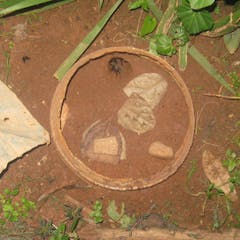
Articles on Spiders
Displaying 1 - 20 of 81 articles

You’ll never look at spiders the same way.

The concept goes back to a 17th century polymath who worked in Germany.

An expert on why spiders are misunderstood and their fascinating survival strategies.

James O'Hanlon’s easy and humorous style makes Silk and Venom a readily digestible and satisfying meal for anyone with an interest in the natural world.

Online searches search trends reveal that there’s a growing link between modern ways of living and the vicious cycle of biophobia.

Ngam dù is a form of divination in which questions are asked of large spiders that live in holes in the ground. The results of spider divination can be used as evidence in Cameroon’s courts.

Spiders liquefy their prey in order to consume it, and this makes it challenging to determine what spiders eat. A new approach that uses DNA barcoding is helping researchers figure out spider diets.

Once confined to the Canary Islands, noble false widow spiders are casting their web worldwide.

There would be no life on Earth without invertebrates, but they are understudied and underappreciated. The Bug of the Year competition aims to change that, so have your say and vote!

This new exhibition at Hobart’s Mona captures Tomás Saraceno’s collaborations with research institutes.

New research shows rewilding with invertebrates – insects, worms, spiders and the like – can go a long way in bringing our degraded landscapes back to life.

Many animals have evolved very entertaining – if not impolite – strategies for evolutionary success.

There is something near-miraculous in the concept of tiny creatures, weighing just grams, making tracks and traces so long ago, that are now evident in rock.

These fascinating spiders only live for about a year and have particularly interesting family arrangements.

Many small animals make their teeth and claws from a smooth blend of proteins and heavy elements. These materials can form very sharp tools that make it possible to cut tough substances using tiny muscles.

To many people, Australia’s spider diversity is a source of fear. To arachnologists, it’s a goldmine, with most Australian spider species still yet to be discovered.

What’s going on here? Why do spiders do this after floods and does it happen everywhere?

In this instalment of our fantasy art travel series, Jen Webb yearns to revisit London, a special aunt and a very big arachnid.

Unsettlingly, it appears that spiders’ legs really do have minds of their own.

The reality TV show I’m a Celebrity, Get Me Out Of Here is under fire for using non-native insects while filming in the Welsh countryside.
